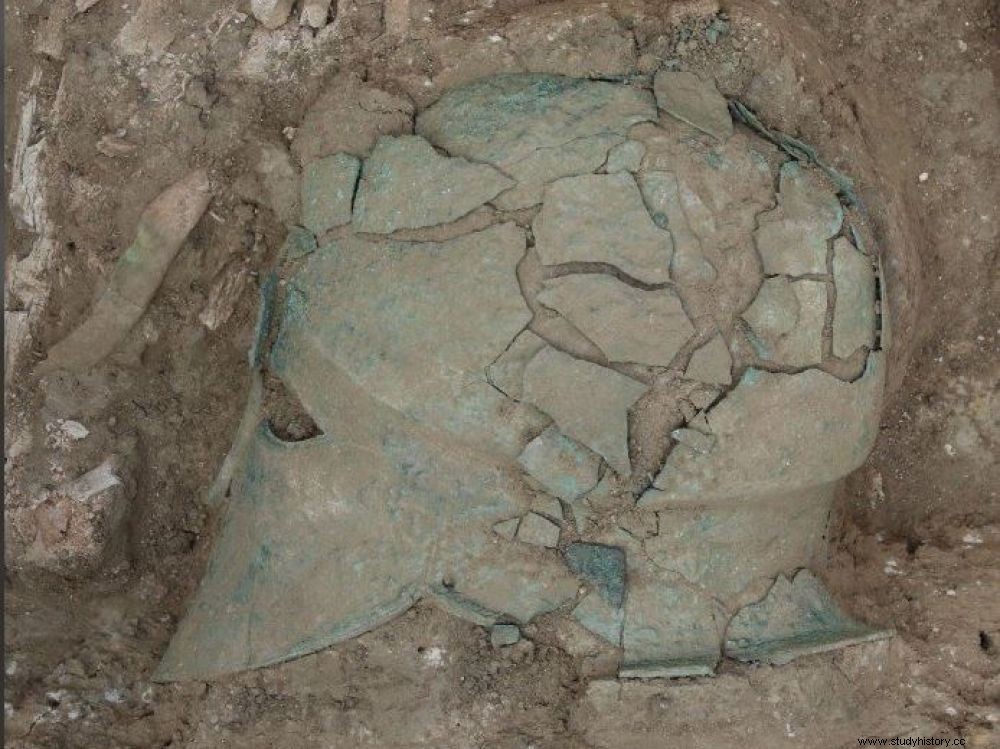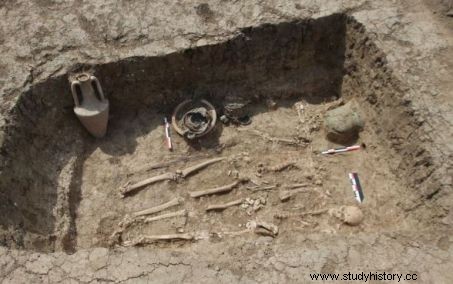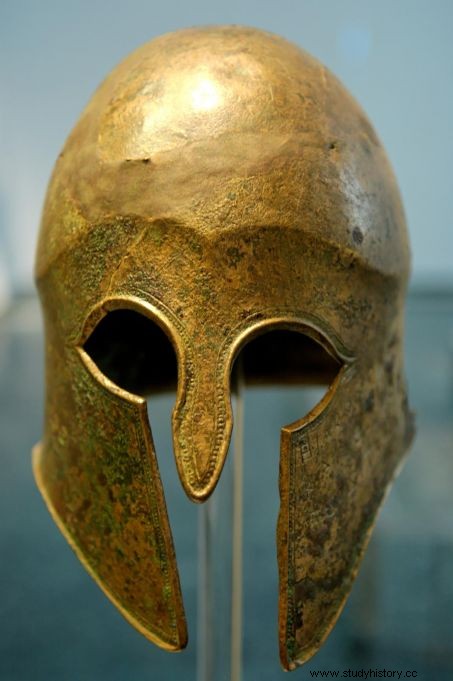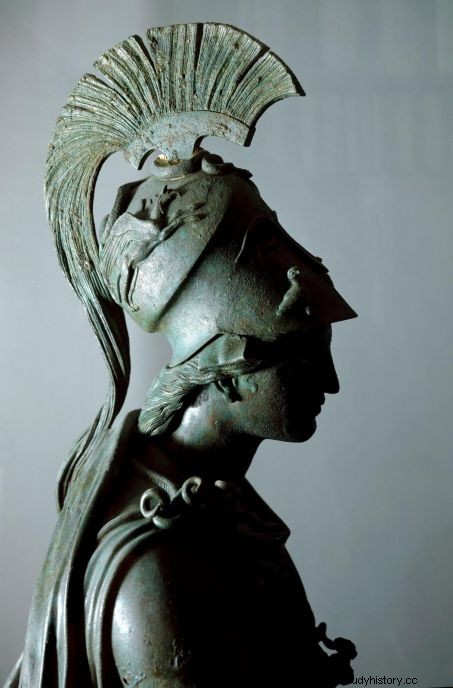A vast necropolis located in the peninsula of Taman, north of the Black Sea, delivered the remains of an ancient Greek helmet.

Bronze Helmet of the V e century BC discovered on the Taman Peninsula, Russia.
The man was stretched out, with near him deposited, memory of battles, his beautiful bronze helmet... It is indeed a so-called Corinthian helmet which was exhumed from a burial of the V th century BC, in southwestern Russia, RIA Novosti news agency reported. Unearthed in the Taman Peninsula; it is the only example of such a helmet found north of the Black Sea.
Burial of Greek warriors dating from the 5th th century before our era. On the right, a Corinthian helmet. © Institute of Archeology of the Russian Academy of Sciences
Corroded by 2500 years of stay in the ground, and therefore highly fragmented, its discovery is no less spectacular. Made from sheet bronze, the crown of Corinthian helmets was extended in one piece by a nasal, very protruding cheek covers (paragnathides) and a neck cover. Inside, fabric or leather padding protected the skull of the warrior. Often their summit was surmounted by a crest (lophos) with a plume of horsehair. Highly protective because totally enveloping, these helmets were an essential piece of equipment for the Greek hoplites, the famous phalanx infantry.
Corinthian type bronze helmet. ©Photononstop/AFP
When the fighters died, he could be buried near them. According to Roman Mimohod, expedition director of the Institute of Archeology of the Russian Academy of Sciences (IA RAS), "the helmet from the Taman peninsula belongs to the Hermione-type Corinthian group and dates back to the first quarter of V e century before our era ". Appeared in Greece around the VI e century before our era, these elements of armor constitute one of the symbols of ancient Greece. The goddess Athena or even Pericles are frequently wearing it.
Statue of the goddess Athena wearing a Corinthian crested helmet. © Leemage/AFP
Archaeologists from the Russian Academy of Sciences have been working for two years in a necropolis of 600 tumuli where many Greek warriors of the Bosphorus kingdom would be buried (read box ). Several Greek colonies were indeed present in this region. Their establishment extends from the end of the VII e century BC. J-C until the second quarter of the IV e century BC. J-C. "These settlements were in very close contact with the Scythian inhabitants of the steppe", says historian Iraoslav Lebedynsky, a specialist in these ancient Eurasian cultures. Even if Strabo recalls that originally the Greeks had repelled the Scythians to install their colonies. From VI e century BC, the Greeks founded large cities on the northern coast of the Black Sea, near Pont-Euxin. The main ones were Olbia, at the mouth of the Dnieper; Panticapeia ("The Way of the Fish"), present-day Kerch, in the far west of Crimea, and Chersonese (Sevastopol); on the Russian side was Phanagoria (Taman), also the name given to the peninsula on which the Corinthian helmet was discovered.
The Bosphorus Kingdom
Created in 480 BC. J.-C.
century of our era. A place of synthesis between Greek culture and the successive nomadic cultures of the steppe, whether the Scythians or the Sarmatians. Between the VI
e
century and the III
th
century before our era, Greeks and Scythians maintained extremely close cultural and commercial relations.



